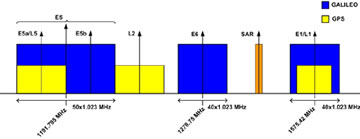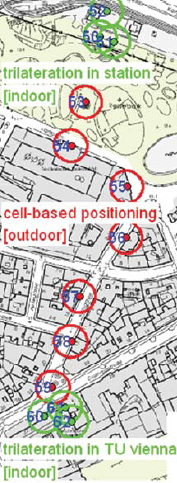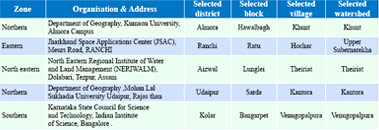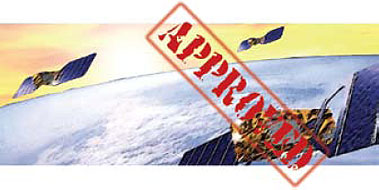Articles in the Articles Category

The disability problem due to Lmphatic Filariasis (LF) disease has been reported in 80 countries Ottesan EA (2000). Globally, the 1.1 billion people are exposed to risk of LF and the estimated LF affected population is 120 million Ottesan EA (2000), Michael E et al. (1996). Our recent estimation showed that there are 21 million diseased individuals in India alone Sabesan S et al. (2000) contributing approximately 40 per cent of global burden. A progressive lymphadema with increasing episodic attack adenolymphngistis (ADL) is the most important cause of physical suffering, permanent disability Pani SP and Lall R (1998) and the economic loss of the affected individuals and the community Ramaiah KD et al. (1998, 1999, 2000). Apart from these LF is also responsible for social problems including sexual disability and discomfort of marital life Dreyer G et al (1997).

E5 band (1164 -1215 MHz), composed of E5a and E5b bands, is part of the spectrum allocated by ITU for new Radio Navigation Satellite Services in 2000. E5 signal has the wider bandwidth (51.150 MHz) never used in satellite navigation. Galileo E5 signal is composed by two data components and two pilot components broadcasted together by means of the multiplexing scheme AltBOC(15,10). E5a band will be used for Freely/NAV message (Open Service) and the codes of data and pilot components are uncripted, E5b band will be used for Integrity/NAV message for Safety of Life and Open Service. Integrity of signal is probably the most advanced service introduced by Galileo [1]. One of the main feature of E5 band is that the signal can be received in two ways: the first is to filter and demodulate only one of side bands E5a or E5b (see Fig. 1) the second is to process the overall received signal containing the components of both bands [2],[3]. In this sections is considered the second way because it will be adopted by professional receivers and this will avoid to obtain all the advantages of Galileo signal. E5 is the most promising signal in terms of performance in multipath environment and positioning for critical applications but also the most challenging for a receiver or a simulation. In this paper will be presented the simulation of the transmission and reception of E5 signal. It will be first described the generation of codes, then it will be illustrated Galileo AltBOC(15,10) signal structure and its differences with a conventional AltBOC, it will be shown a way for the generation of that signal and some basic characteristics for the development of a software receiver for E5.

As per the textbook theory of market maturity in any country, the expected stages are that of market development, rapid growth, saturation or maturity and the decline. Having had the good fortune to predict the evolution of GPS Navigation market in India, here is a retrospective of the various phases, from both the vendor’s and consumer perspective.

Alternative location methods for absolute positioning in areas where no GNSS position determination is possible due to obstruction of the satellite signals are needed in mobile positioning. Active RFID (Radio Frequency Identification) can be used also for position determination, although the system was not only developed for positioning and tracking but mainly for identification of objects. Using RFID in positioning, different approaches can be distinguished, i.e., cell-based positioning if the RFID tags are installed at active landmarks (i.e., known locations) in the surroundings, trilateration if ranges to the RFID tags are deducted from received signal strength (RSS in RFID terms) values and location fingerprinting where the measured signal power levels are used directly to obtain a position fix. Using Cell of Origin (CoO) the achievable positioning accuracy depends on the size of the cell and is therefore usually several metres up to 10’s of metres using long range RFID equipment. Higher positioning accuracies can be obtained using trilateration and fingerprinting. In this paper the use of trilateration is investigated.
May 2008
International Conference: “Studying, Modelingand Sense Making of Planet Earth
1 – 6 June, 2008
Department of Geography, University of the Aegean, Mytilene, Lesvos , Greece
http://www.aegean.gr/geography/earthconference2008/en/main_fr.htm
Navigation and Location Europe 2008
4 – 5 …

Most of today’s Location Based Services (LBS) provide information based solely on a users’ location, not taking into account context knowledge about the user’s current situation and needs. This often results in low-quality and inappropriate information to the user. Hence, in order to provide user-oriented services, an improvement of the response-quality of information requests is required. Knowledge about the coordinates of places where the user regularly stays in her life combined with semantics about such places can provide valuable knowledge for LBS. Zhou et al.

Nehru Yuva Kendra Sangathan (NYKS) , an autonomous agency under Ministry of Youth Affairs and Sports has the bounden duty to achieve the objectives laid down in the National Youth Policy. The advancement in the field of Science and Technology should be made available to the youth and to the community. As the adaptation of scientific and technological principles and developments, to maximize the use of local resources, are central to empowerment in the quality of life, the Policy recognizes the importance of emerging, modern technologies, particularly in the field of information technology and electronic media, in enabling the youth to perform and achieve in all sectors of their interest.

GPs is running since more than a decade. There are user groups in all domains relying on the provided information. GPS is even used in safety critical environment, but there have been no certification of the GPS system nor are there any plans to do so. Within aviation, GPS is assumed to fulfill requirement on reliability and availability based on observations of the past. Is the discussion in Europe about certification of the Galileo SIS (Signal in Space) just another proof for the bureaucratic overhead imposed on the Galileo project? NavCert as part of the TÜV SÜD group is focused on certification in the area of positioning and navigation.












 (5.00 out of 5)
(5.00 out of 5)